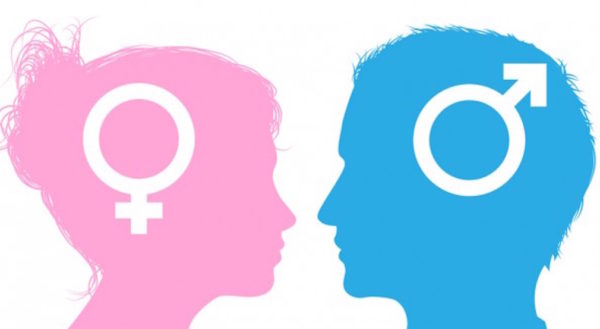Just What Are Men and Women, Anyway?
by Joe Heschmeyer
Filed under Anthropology, Sexuality

Sometimes, the most important questions are the basic ones. Back in 2011, I argued that the most important question in the gay-marriage debate was “What is marriage?” The next year, Robert George, Ryan Anderson, and Sherif Girgis published a book exploring just that question: What Is Marriage?: Man and Woman: A Defense. But in the face of contemporary questions of transgenderism and gender identity, it turns out that we need to ask a yet more-basic question: what are men and women, and what makes them different?
To some of you, that question might seem obvious, even asinine. Nearly all of us have a working understanding of what we mean by “men” and “women.” Ironically, even people who believe that it’s possible to be transgender still affirm this: calling a man a “trans-woman” presupposes that we know what a woman is. In other words, what does it mean to say that a biological male is a woman?
I. Bad Answers to the Men and Women Question
Bear in mind, we’re looking for what it is that makes all men unlike all women. So here are some incorrect answers to the question:
- Using stereotypes to distinguish men from women: women may tend to be more nurturing and men more abstract-thinking, etc., but there are so many counter-examples to any stereotype that you can come up with that this is obviously not a workable answer.
- Using social norms to distinguish men from women: things like “women wear dresses, and men wear pants” are both stereotypes (suffering the same flaw as #1) and culturally-contingent: think Scottish kilts or female dress slacks as obvious counter-examples.
- Using hormones to distinguish men from women: men typically have higher levels of testosterone and lower levels of estrogen, than women do. But testosterone and estrogen levels vary from individual to individual, and change throughout your life.
- Using sexual organs to distinguish men from women: This is an obvious difference, but it’s not a satisfying answer. A castrated man isn’t less of a man, after all, nor is a woman any less a woman if she’s had a hysterectomy or mastectomy. Plus, a small portion of the human family is born “intersex” (a poor term) with ambiguous genitalia.
- Denying that such a difference exists: Obviously, the fact that we can speak coherently of men and women means that we’re somehow distinct.
Nevertheless, while all of these answers miss the mark, all of them also have an element of the truth, which makes them attractive. So what would a better answer look like?
II. A Better Answer
Here’s what I think a better answer might look like:
- The essential distinction between men and women is genetic. All men have a Y chromosome (typically XY, although in some cases XXY or XYY), and no women have Y chromosomes. In other words, men are adult male humans and women are adult female humans.
- This genetic difference tends to express itself in different sexual organs. In rare cases, something impedes this from happening as it is ought to, or something happens to the sexual organs. But even in the case of those borned “intersexed,” there is a genetic sex: it just may be harder to tell.
- This genetic difference also tends to express itself in different brain chemistry, different levels of various hormones, and differences (big and small) in cognitive and behavioral development.
- Society also plays a role, and environmental factors can even impact hormone levels. It is not always easy to determine which social behaviors are attributable to social roles, or environment, or innate genetics. But most societies amplify the differences between the sexes by creating a set of gender roles.
The chief benefits of this definition of men and women are threefold.
First, this is what we have always meant by men and women, even before we knew what genes were. There was a recognition that there were real differences between male and female humans, present from birth, and we expressed these different types of humans with the terms ‘boy’ and ‘girl’ for children and ‘men’ and ‘women’ for adults (and ‘male’ and ‘female’ on the whole). Genes explain why these differences exist (and why unusual things sometimes happen in how the genes express themselves). Second, this is how we speak about non-humans. We can coherently speak of male and female mammals using a similar genetic distinction. Finally, this definition avoids two obviously-false extremes: the idea that men and women are interchangeable, and a sort of “Rambo and Barbie” reductionism.
III. The Implications for the Transgender / Gender Identity Question
The points above are much bigger than contemporary debates over gender identity and transgender issues. A lot of the ink spilled over the last few decades on issues like feminism could be aided by everyone having a clearer understanding of women and men and the differences between them (and especially, of which of those differences are innate and universal, and which of those are socially constructed, etc.). But while it’s not reducible to that question, I think it’s helpful.
We can both affirm that there really are fundamental genetic differences between men and women, and affirm that (for example) some women act and emote in conventionally-masculine ways, and may even have higher-than-average testosterone levels, etc. So it’s no surprise that there are people who don’t “fit” the social expectations for what a man or what a woman is like. That, of itself, is nothing new – terms like “tomboy” exist to describe this reality. And our response ought to be one of compassion and support, particularly if we’re Christians.
But having a coherent definition of “man” and “woman” does show why transgenderism is a non-starter. What I mean is this. If the claim were just “I’m a man who likes feminine things,” that would be a coherent idea. But if a biological male claims to be a woman, what does that person mean by “woman”? They can’t mean that a biological male is biologically female, because that doesn’t make sense. And if their understanding of what it is to be a “woman” is rooted in any of the types of definitions we explored in Part I, you can see why those don’t work.
So there’s something a bit deceptive in all of this. A person who believes in transgenderism cannot say that men and women are the same thing (since there would be nothing to “trans” if the two genders are the same). But they also cannot affirm that men and women are essentially different, since affirming that fact would make their own claim nonsense. So “transgenderism” relies on the language of “man” and “woman,” and even relies on the idea that the two are somehow different, while emptying those words of any actual meaning and refusing to define what this new meaning of “man” and “woman” actually is.
Related Posts
Note: Our goal is to cultivate serious and respectful dialogue. While it's OK to disagree—even encouraged!—any snarky, offensive, or off-topic comments will be deleted. Before commenting please read the Commenting Rules and Tips. If you're having trouble commenting, read the Commenting Instructions.












